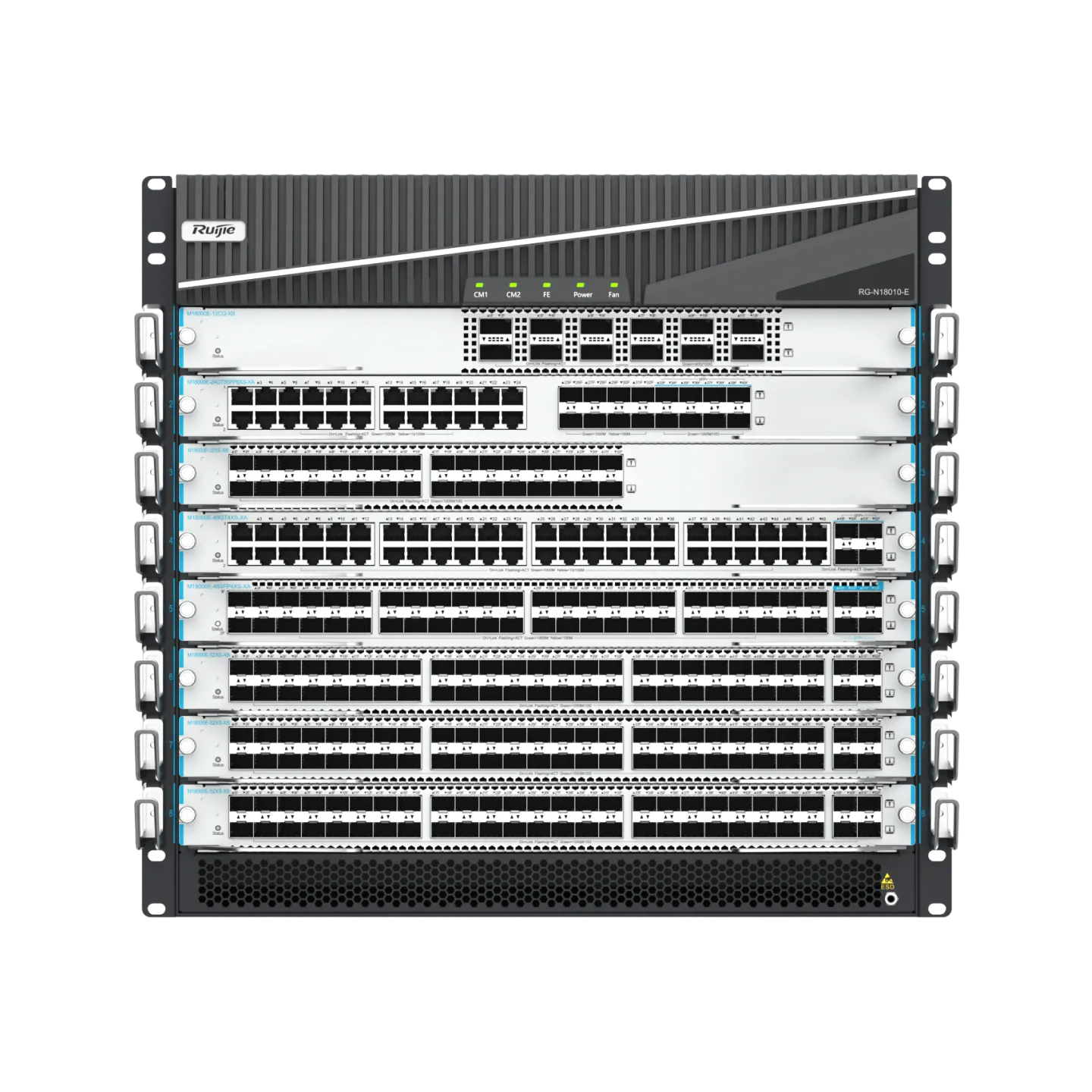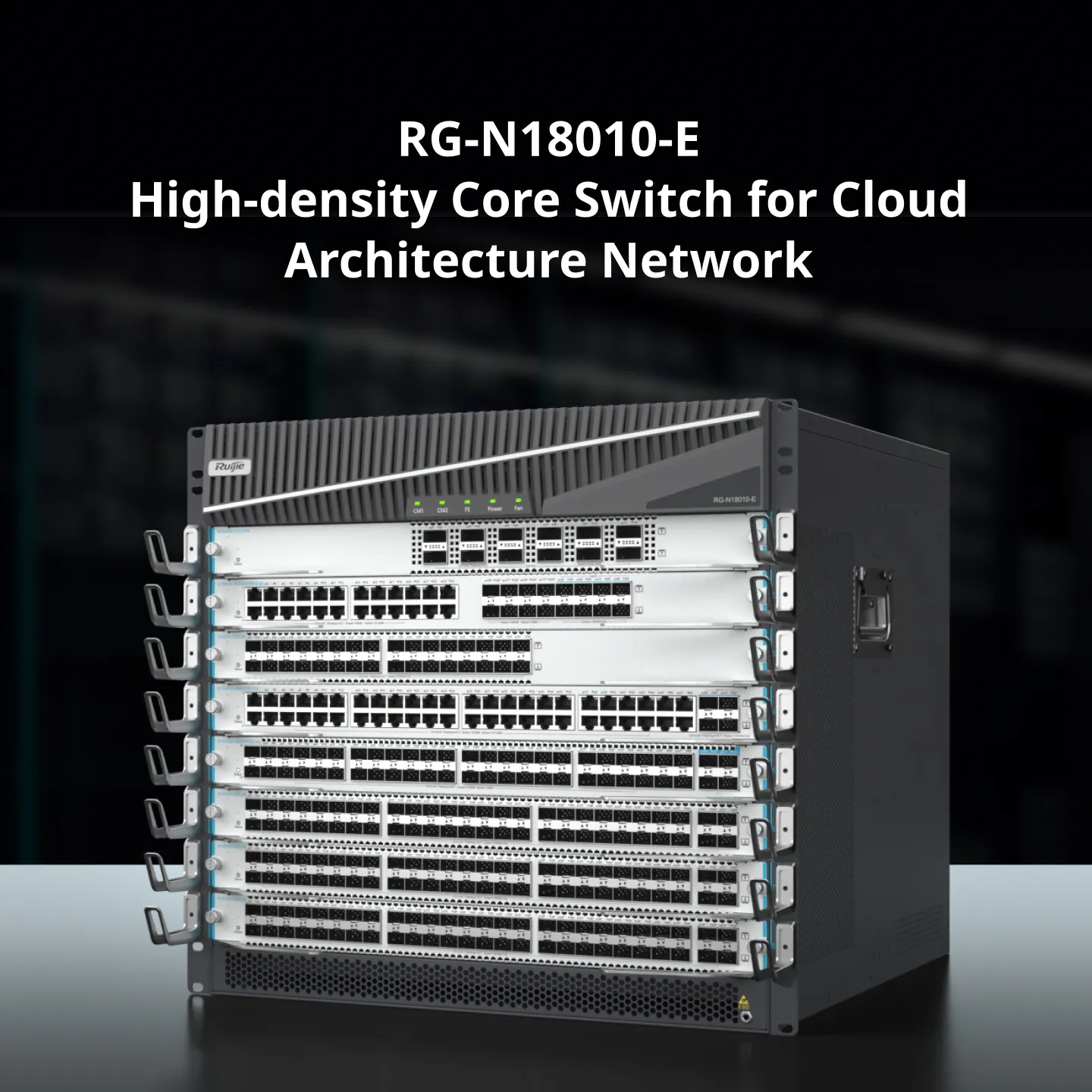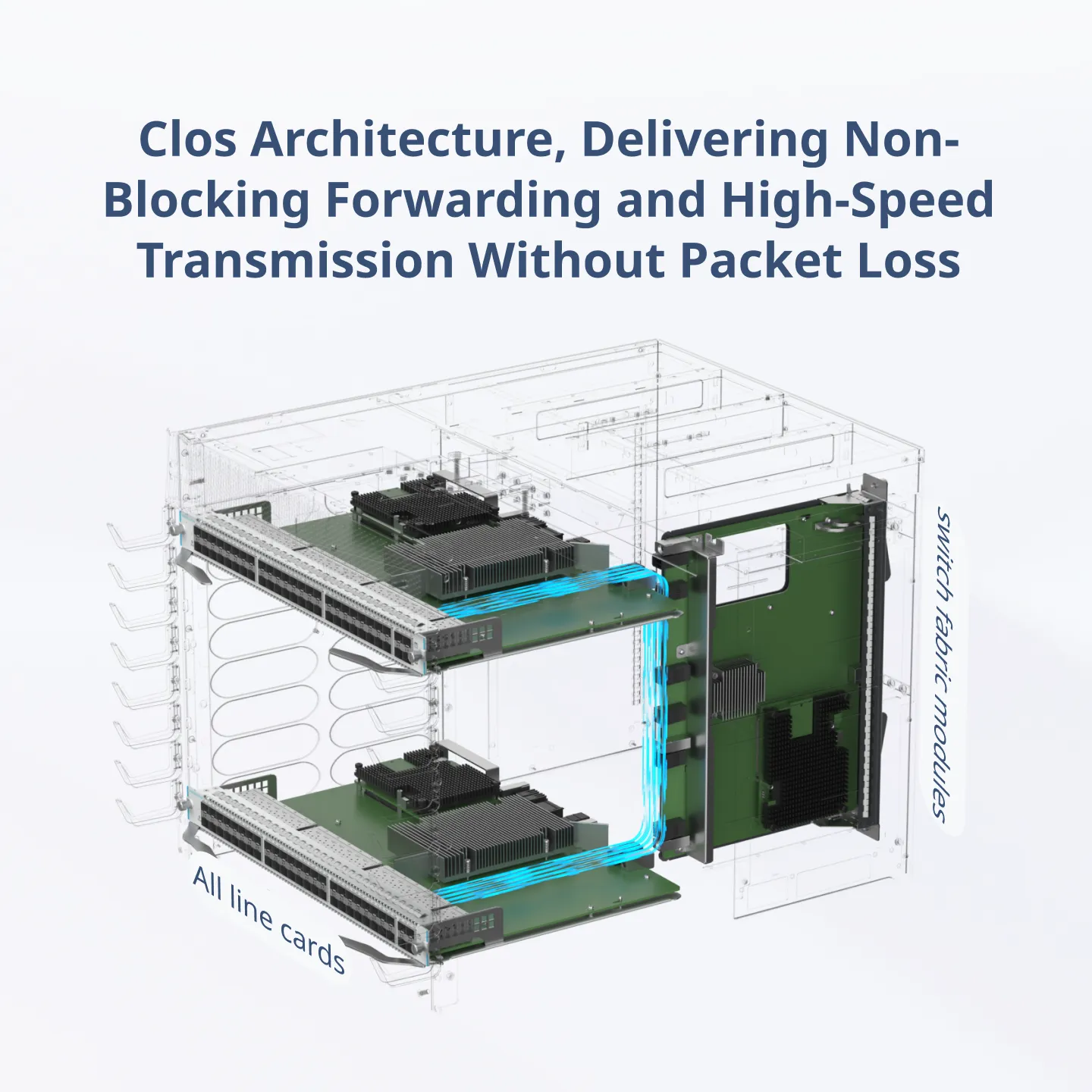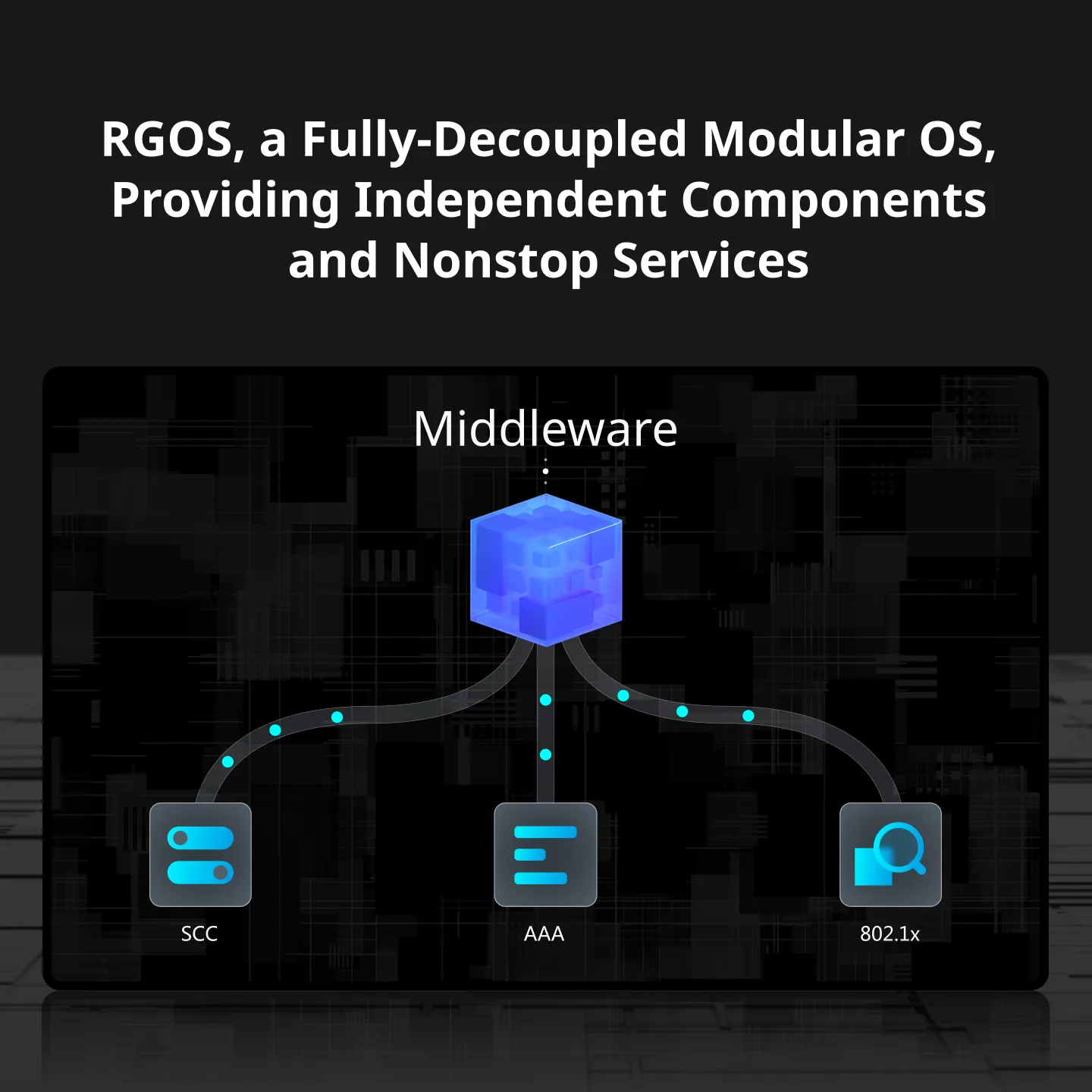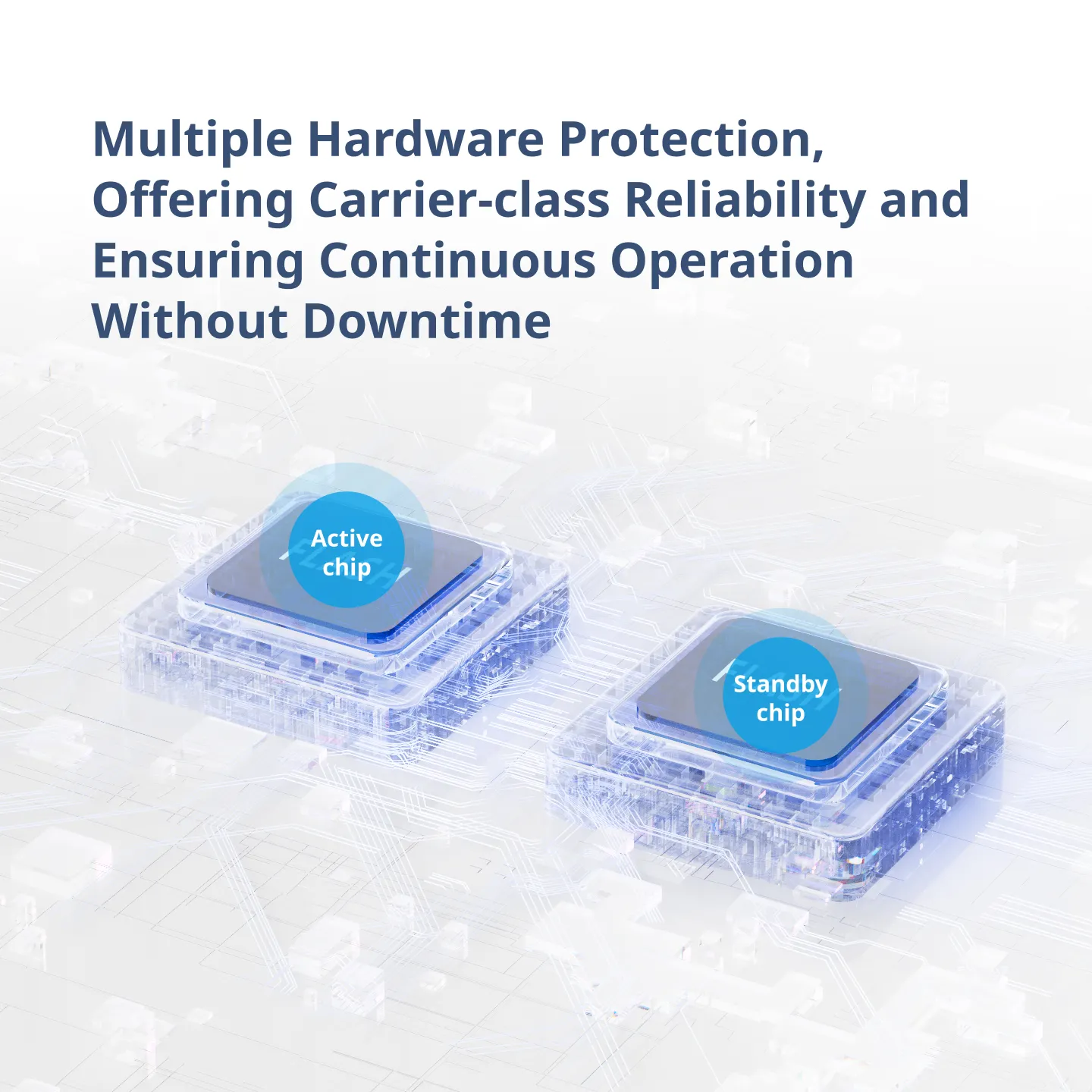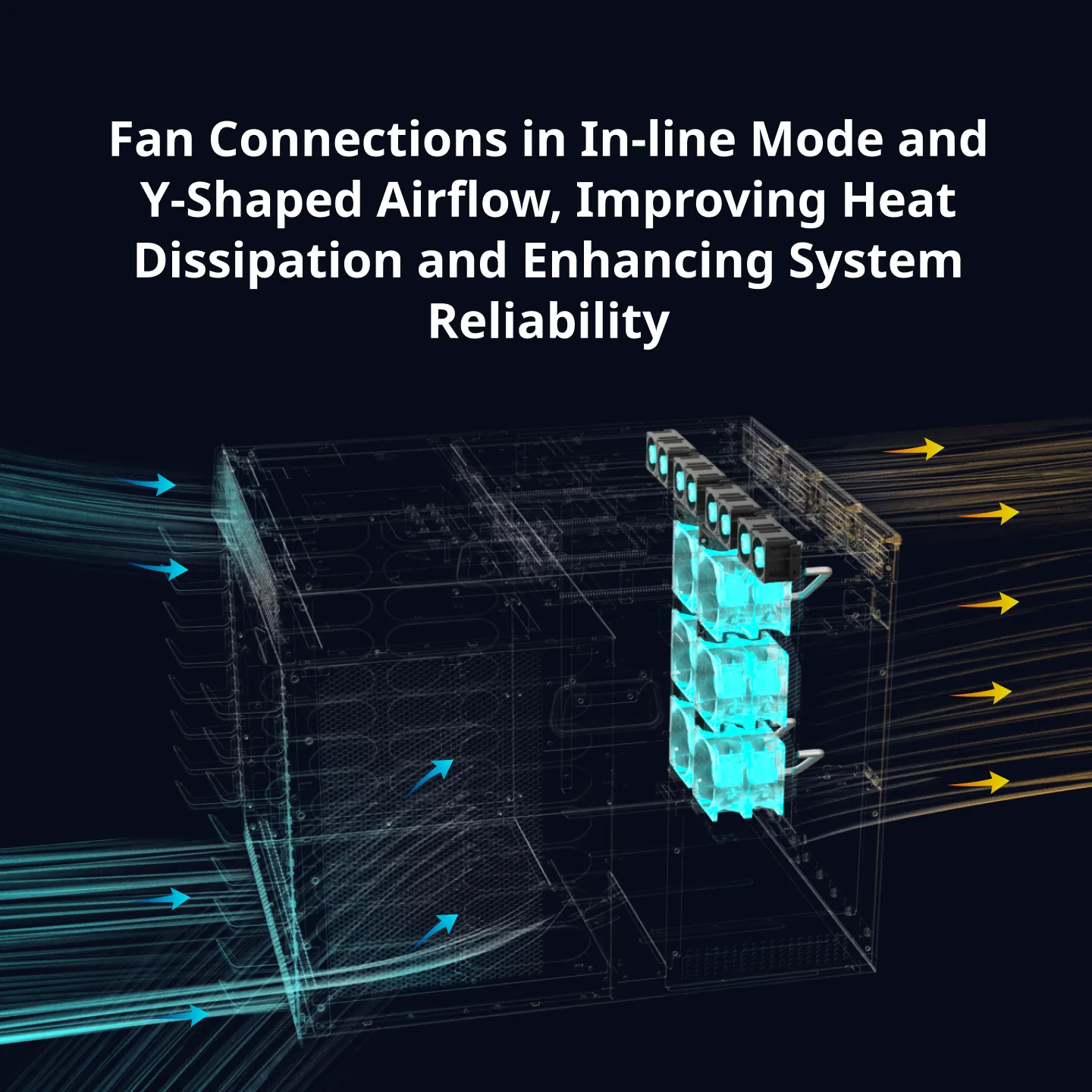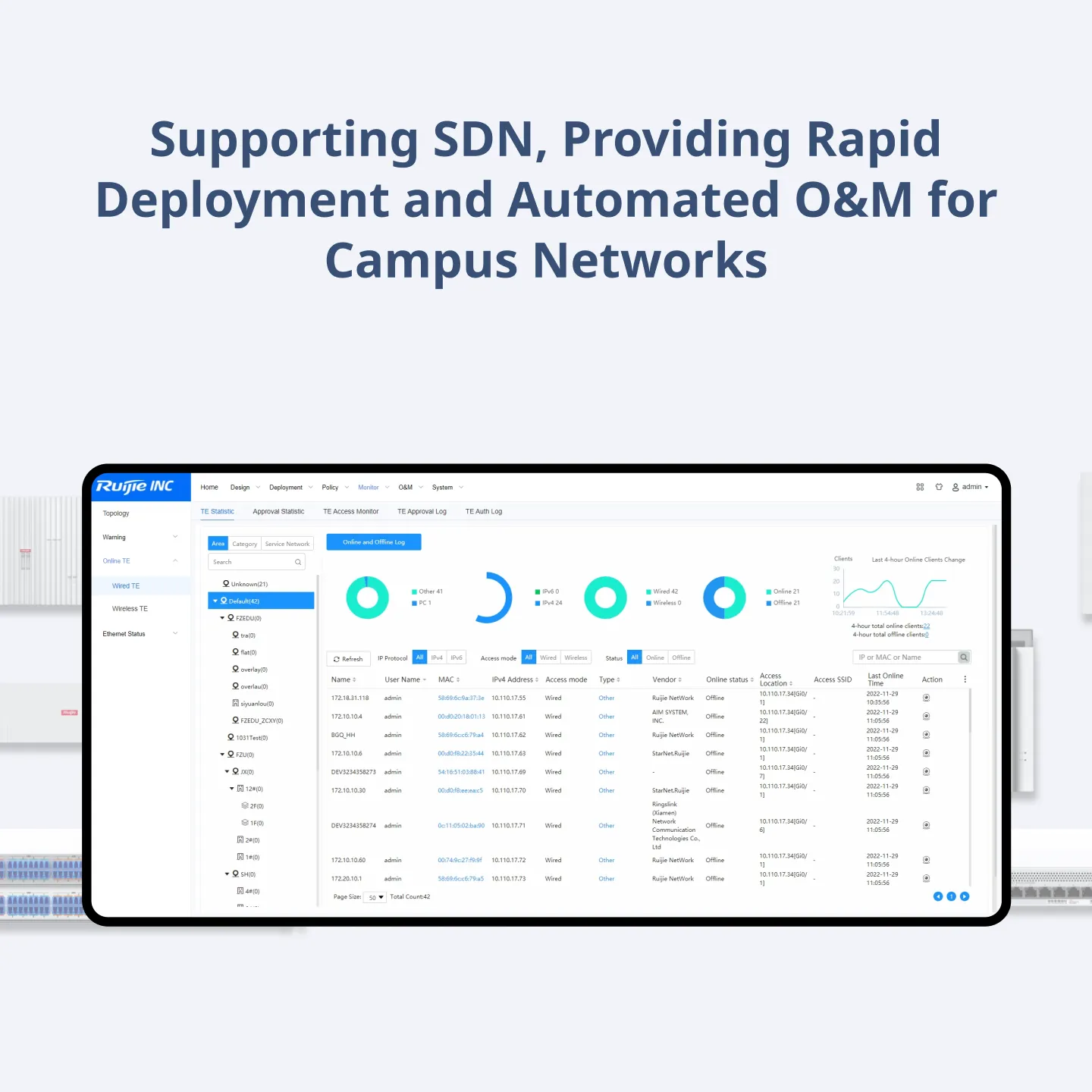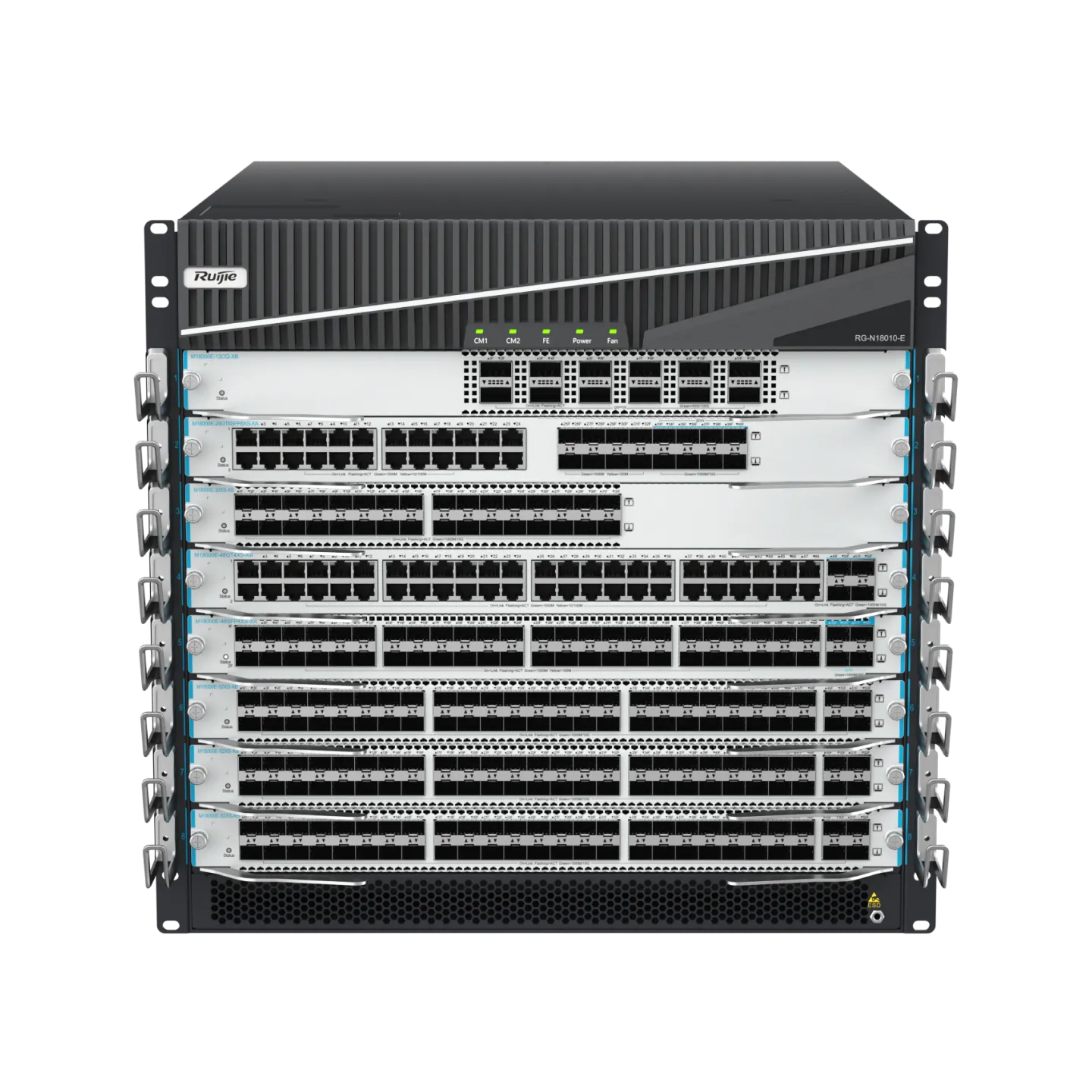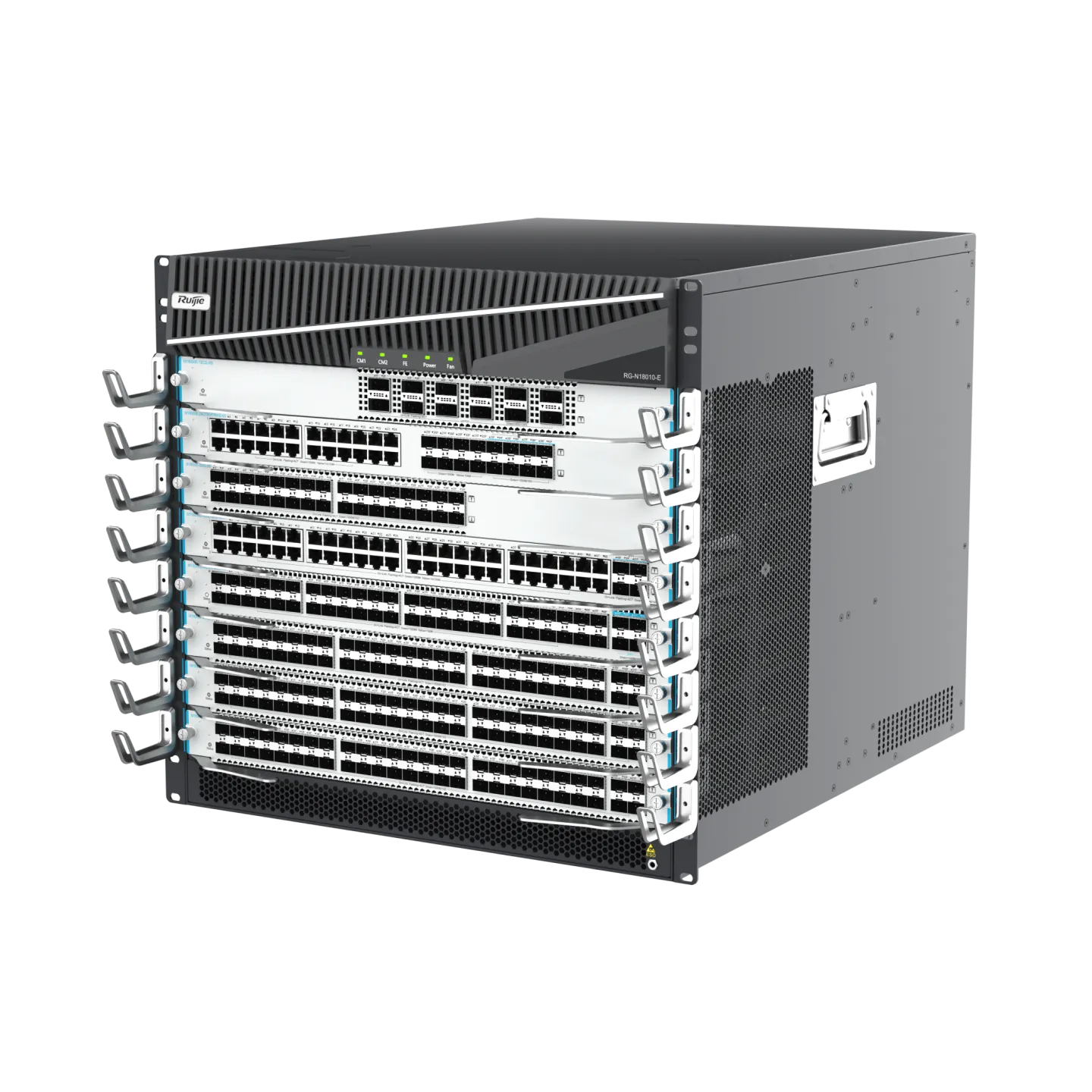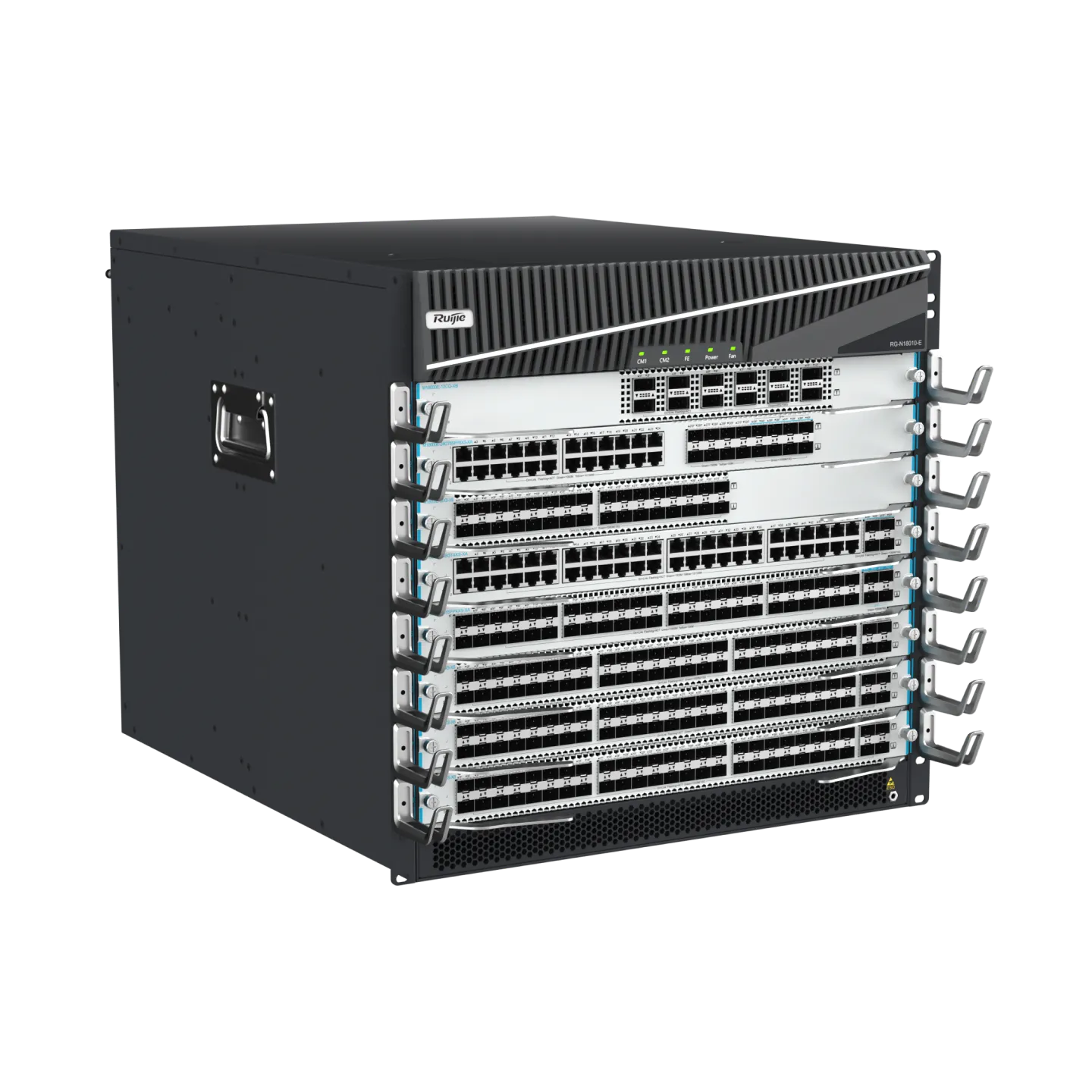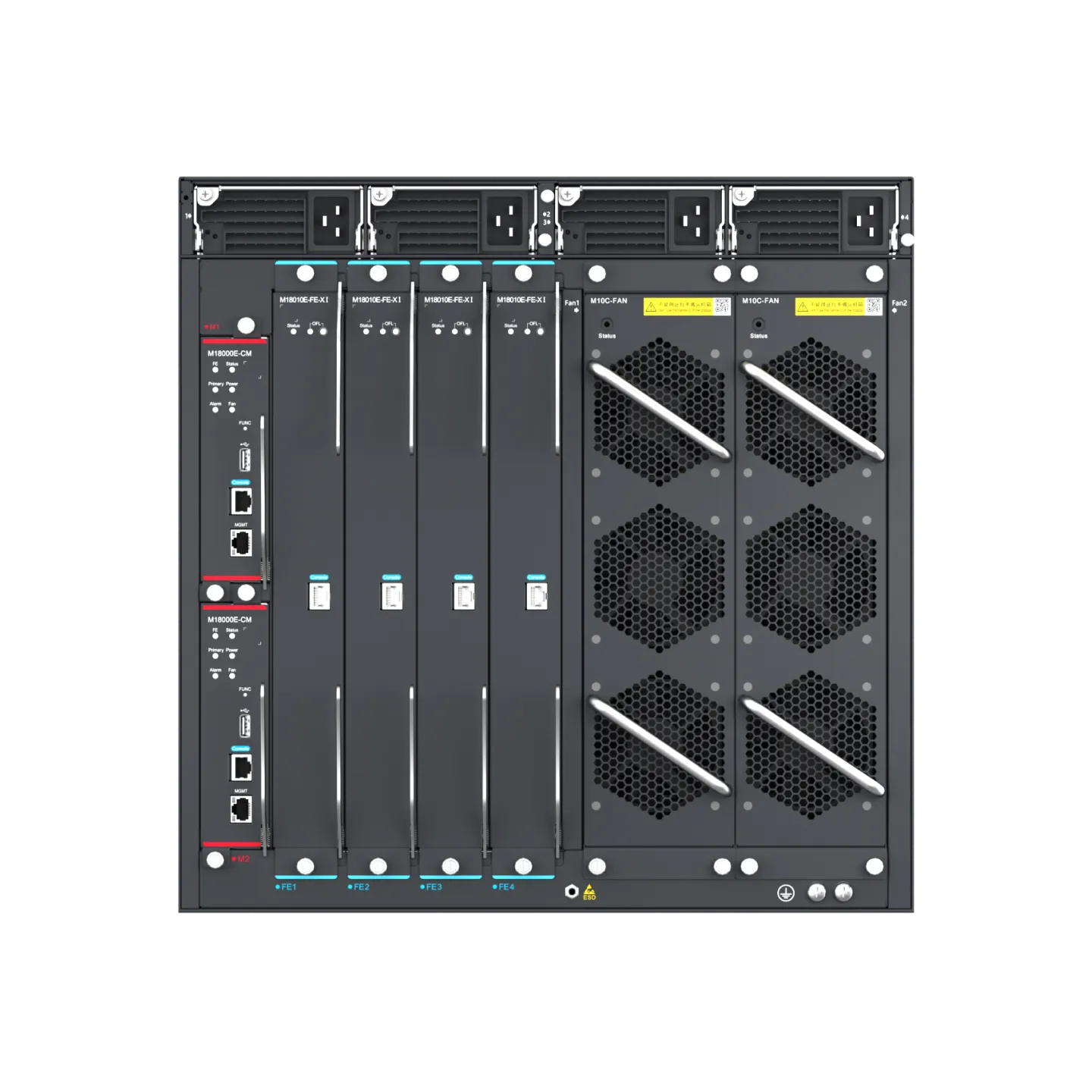RG-N18010-E
High-density Core Switch for Cloud Architecture Network
Up to 52 x 10GE ports and 12 x 100GE ports per line card, and up to 416 x 10GE ports and 96 x 100GE ports per switch
Fit for data centers, MANs, campus networks, and scenarios with data centers and campus networks
Front Panel
Rear Panel
supporting at most eight line cards
8 x SFX 10GE ports
(CWDM line card for core switches, applicable to SOE solution 3.0)
8 x SFG GE ports
(CWDM line card for core switches, applicable to SOE solution 3.0)
Large-capacity carrier card for authentication, supporting two DNMX interface cards
20 x 10GE optical ports
4 x 100GE optical ports
Clos Architecture, Delivering Non-Blocking Forwarding and High-Speed Transmission Without Packet Loss
All line cards and switch fabric modules adopt the orthogonal architecture. Cross-line card traffic is transmitted to switch fabric modules through orthogonal connectors, with low transmission loss. This greatly reduces signal attenuation and improves service traffic transmission efficiency.
RGOS, a Fully-Decoupled Modular OS, Providing Independent Components and Nonstop Services
Completely decoupled service components, allowing automatic recovery upon component failures and ensuring high availability of the system
Live upgrade of service component functions, ensuring uninterrupted network for online function expansion
Multiple Hardware Protection, Offering Carrier-class Reliability and Ensuring Continuous Operation Without Downtime
Hardware-level Dual Redundancy
Faulty Optical Port Isolation
Two flash chips used to store boot software to achieve hardware-level boot redundancy, avoiding switch boot failures due to flash chip faults
Fan Connections in In-line Mode and Y-Shaped Airflow, Improving Heat Dissipation and Enhancing System Reliability
Compared with the conventional single fan, fans connected in in-line mode improve the performance by 50% and provide better airflow. Y-shaped airflow design with front and right air inlets and rear air outlets forms a three-dimensional heat dissipation channel, improving heat dissipation efficiency. The airflow of line cards and switch fabric modules is separated from each other, enhancing system reliability.
Supporting SDN, Providing Rapid Deployment and Automated O&M for Campus Networks
